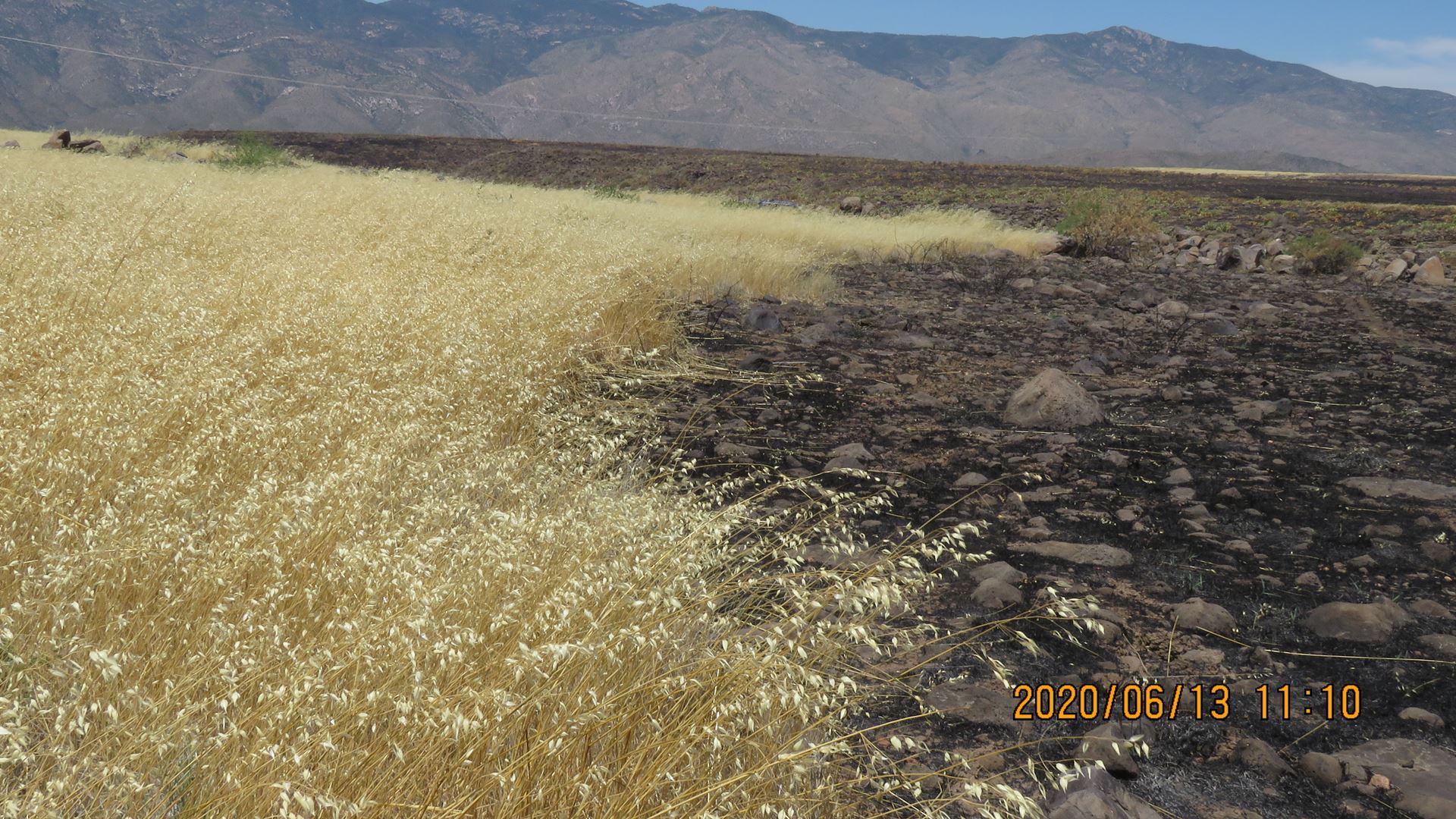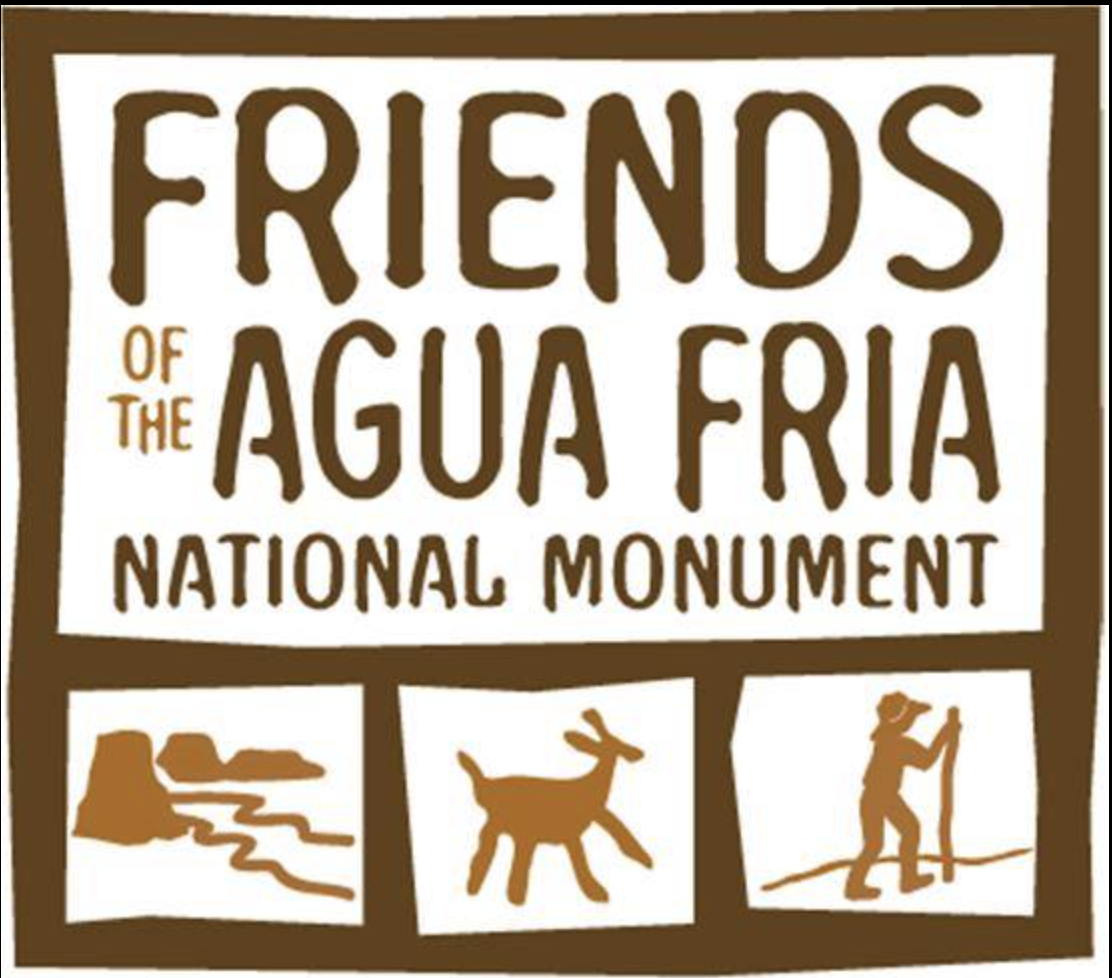Links to helpful websites with AFNM scientific info |
|
The Monument contains specific resources for which it was declared a National Monument. Special resources (called "objects" in the Declaration) include archeological features such as ruins and petroglyphs, and natural features such as the green riparian zone and associated wildlife along the Agua Fria River. The natural features also include spacious grasslands that provide habitat and a migratory corridor for the American pronghorn, the fastest mammal in North America. Nesting and migratory birds rely on the grasslands to provide seeds and insects for nourishment. Native peoples have inhabited and used the grasslands for perhaps thousands of years. This March 2013 Perry Mesa photograph shows the grassland with a vegetation plot. The FAFNM Natural Resources Committee conducts field trips to monitor this small plot that excludes cattle.

The historic, cultural, and natural features of the grassland are detailed in this 2006 Agua Fria Grasslands Assessment document (part 1, part 2, part 3).
The Sunset Fire on May 31, 2020 swept uphill from I-17, east into Arrastre Canyon, north across Black Mesa, and was stopped at Badger Springs, but not before consuming 4000 acres of the grassland. The fate of the pronghorn herd that resided on this grassland is unknown. The June 2020 photo shows the burn line in contrast to the unburnt invasive oats and Sahara mustard weed. The summer 2020 monsoon season produced no rain. Likewise, the Sept 2020 photo shows no recovery of the burned grassland.

In April 2021 Black Mesa is showing signs of vegetative recovery; but, nearly all the vegetation is exotic and invasive weeds:
The dominant vegetation re-growing in April 2021 in the Black Mesa burn area are invasive weeds: Sahara mustard, oats, barley, and filaree:




